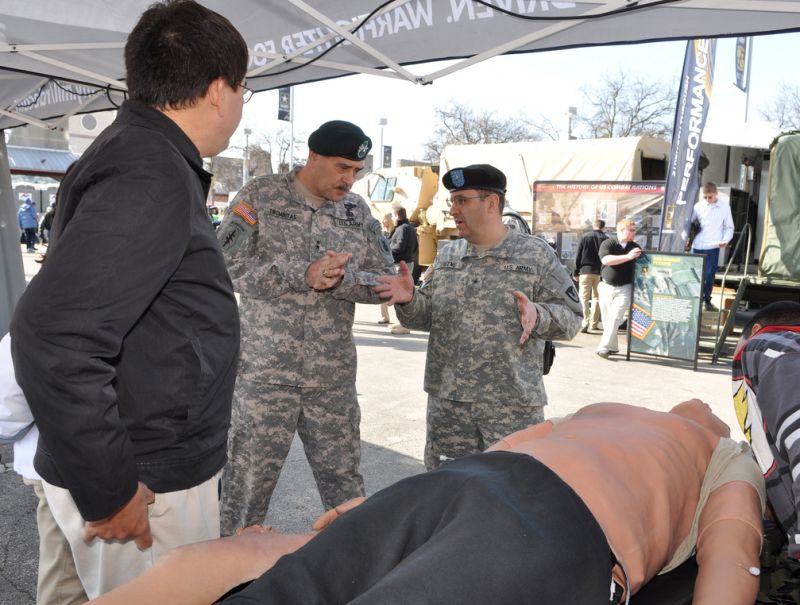Education, technology and football collided Jan. 8, during the All-American Bowl with the U.S. Army Materiel Command flexing its technology muscle through the U.S. Army Research, Development and Engineering Command, a major subordinate command of AMC.
The Army is evolving, and it needs more than bullets and a rifle to survive. Today, Army technology is a growing asset effecting industry and pioneering new technologies necessary to support our all-volunteer force, which were featured at the Army Strong Zone.
RDECOM showcased Army technology with various displays such as: a robotics obstacle course, an unmanned aerial vehicle (UAV), unmanned ground vehicles (UGVs), clandestine extended range vehicle (CERV), future Soldier technologies, transparent armor display, flexible displays, human universal load carriage (HULC) exoskeleton, night vision technologies, thermal weapon sight (TWS), DoD combat feeding, fuel efficient demonstrator, renewable power, potable water from air system, and trash to garbage energy refiner (TGER), switchable vision block, and the avenger table top trainer just to name a few.
Garnering the attention of Secretary of the Army John McHugh, and Maj. Gen. Nick Justice, commanding general of RDECOM, was the fuel cell power source.
The fuel cell power source is just one of AMC’s renewable, or “green,” technologies.
Its benefits include: lighter weights, renewable energy, portable and continuous power, and reduced costs.
“It’s about three times more efficient than a generator, so you’re getting three times more power out of the system for the same amount of fuel you put in,” said Michael Dominick, mechanical engineer for the U.S. Army Communications- Electronic Research, Development and Engineering Command.
Dominick explained that the fuel cell power sources can charge up to six batteries at a time by creating chemical energy from disposable fuel cartridges.
Adjacent to the fuel cell display was the stand-alone patient simulator, which is the world’s first wireless, rugged, physiologically-based patient simulator.
Researched and developed under an Army Technology Objective (ATO), the SAPS was designed specifically to meet Army training needs.
Christine Allen, a research analyst for the Simulation and Training Technology Center, was a part of the center creating history.
“Whatever we do, we do to make it better,” said Allen.
For an in-depth look into the Army’s latest technologies from RDECOM, take a look at the related links.











